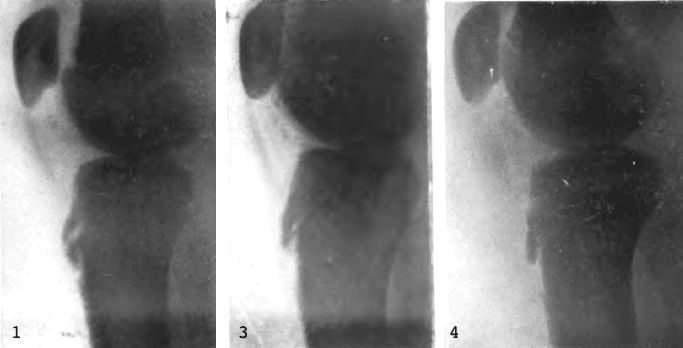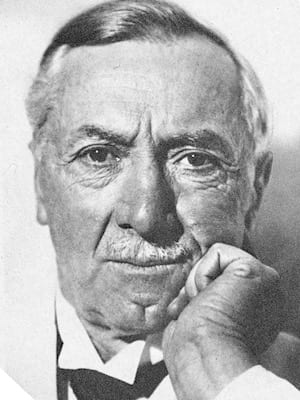Carl B. Schlatter
Carl Bernhard Schlatter (1864-1934) was a Swiss Surgeon.
Krönlein’s senior physician and first “trauma surgeon” at the Poliklinik des Kantonsspitals, Zürich. Professor of general surgery in Zurich, Switzerland, and performed the first total gastrectomy in 1897
Described the disease that partially bears his name (Osgood-Schlatter disease) in 1903, independently of Robert Bayley Osgood
Biography
- Born on March 18, 1864 in Wallisellen, Switzerland
- 1889 – Doctorate in medicine from the University of Zurich
- 1890 – Worked with Theodore Billroth (1829-1894)
- 1893 – Poliklinik des Kantonsspitals, Zürich
- 1895 – Habilitated for surgery at the University of Zurich; thesis: Die Behandlung der traumatischen Leberverletzungen
- 1914-1915 Surgeon in prison camps and then the Military Hospital of Stuttgart
- 1923 – Professor of General. Surgery, Wound treatment, dressing teaching and accident medicine at the Poliklinik des Kantonsspitals Zürich until retiring in 1934
- Died on March 19, 1934 in Zürich, Switzerland
Medical Eponyms
Osgood-Schlatter disease (1903)
Osgood–Schlatter disease (OSD) is an osteochondrosis or traction apophysitis of the tibial tubercle. OSD is common during the early adolescent growth spurt between 10 and 15 years of age, particularly in children who participate in sports that involve running and jumping. It is more common in males and may affect both knees.
Schlatter published “Verletzungen des schnabelförmigen Forsatzes der oberen Tibiaepiphyse” [Injuries of the beak-shaped appendage of the upper tibial epiphysis] including his observations of 7 patients with separation of the anterior rostrate (beak) process from the upper tibia noting. The condition was often referred to as Schlatterschen Krankheit. He noted:
…these injuries represent a clinically sharply delineated profile of the disease whose symptom complex is in most cases simple and easy to diagnose without the use of radiographs
Schlatter 1903

- Fig 1. Hakenförmiger Fortsatz eleviert und seine Spitze abgebrochen.
- Fig 3. Breite Spalte zwischen dem abgebrochenen Epiphysenfortsatz und der Tibiadiaphyse.
- Fig 4. Unteres Ende des Epiphysenfortsatzes abgehoben, vordere Tibiakante unterhalb der Epiphysenspitze nnregelmässig konturiert.
- Fig 1. Hook-shaped extension elevated and its tip broken off.
- Fig 3. Wide gap between the broken epiphyseal process and the tibial diaphysis.
- Fig 4. Lower end of the epiphyseal process lifted off, the anterior tibial edge below the epiphyseal tip irregularly contoured.
Other Medical Eponyms
- Schlatter operation (1897) gastrectomy with jejunostomy.
Major Publications
- Schlatter C. Die Behandlung der traumatischen Leberverletzungen: Züricher Habilitationsschrift. Sonderabdruck aus Beiträge zur klinischen Chirurgie. 1896
- Schlatter C. A unique case of complete removal of the stomach – Successful oesophago-enterostomy – Recovery. Medical Record. 1897; 52(26): 909–914
- Schlatter C. Über Ernährung und Verdauung nach vollständiger Entfernung des Magens, Oesophagoenterostomie, Beiträge zur klinischen Chirurgie. 1897; 19: 757-776 [Schlatter operation]
- Schlatter C. Über Ernährung und Verdauung nach vollständiger Entfernung des Magens, Oesophagoenterostomie. Beiträge zur klinischen Chirurgie, 1899; 23: 589-94 [Schlatter operation]
- Schlatter C. Verletzungen des schnabelförmigen Forsatzes der oberen Tibiaepiphyse. Beitrage zur klinischen Chirurgie, 1903; 38: 874-87 [Osgood-Schlatter disease]
- Schlatter K. Die Brüche der Mittelhandknochen. 1910
- Gelpke L, Schlatter C. Lehrbuch der praktischen chirurgie für ärzte und studierende. 1913
- Gelpke L, Schlatter C. Unfallkunde für Aerzte sowie für Juristen und Versicherungsbeamte. 1917
- Schlatter C. Die Behandlung der Furunkel und Karbunkel. Deutsche Medizinische Wochenschrift. 1918; 44(19): 505-508
References
Biography
- Schweizerische medizinische Wochenschrift. 1934; 64: 777-781
- Zirojevic D. Der Unfallchirurg Carl Schlatter (1864-1934). Zürcher medizingeschichtliche Abhandlungen. 1990; 214 [NLMID 9822946]
- Mörgeli C. Schlatter, Carl. In: Jorio, M. Historisches Lexikon der Schweiz (e-HLS). 2010
- Bibliography. Schlatter, Carl B. WorldCat Identities
Eponymous terms
- Hunter TB, Peltier LF, Lund PJ. Radiologic history exhibit. Musculoskeletal eponyms: who are those guys? RadioGraphics 2000; 20: 819-36.
- Ladenhauf HN, Seitlinger G, Green DW. Osgood-Schlatter Disease: A 2020 Update of a Common Knee Condition in Children. Curr Opin Pediatr. 2020 Feb;32(1):107-112.
[cite]
Resident medical officer in emergency medicine MB ChB (Uni. Dundee) MRCS Ed. Avid traveller, yoga teacher, polylinguist with a passion for discovering cultures.



[…] Carl Schlatter […]